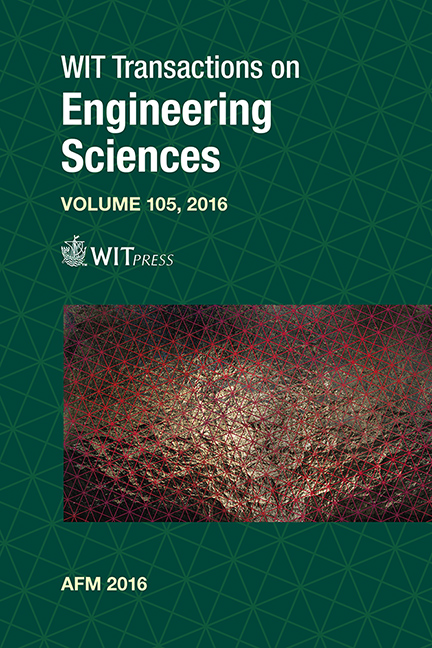Numerical Simulations Of The Aerodynamic Response Of 2D Circular Segments By Means Of URANS
Price
Free (open access)
Transaction
Volume
105
Pages
16
Page Range
49 - 64
Published
2016
Size
10,105 kb
Paper DOI
10.2495/AFM160051
Copyright
WIT Press
Author(s)
F. Nieto, M. Cid Montoya, A. Álvarez, S. Hernández, J. Á. Jurado
Abstract
In the wind engineering field, the so-called D-section (semi-circular cylinder) has attracted some attention from researchers, since it is a galloping prone geometry. In fact, a modest number of references where this type of cross-section has been studied in the wind tunnel can be found, such as Novak and Tanaka (1974) or Weaver and Veljkovic (2005). However, to the authors’ knowledge, references in the literature concerning the CFD-based simulation of the aerodynamic response of circular segments are particularly scarce. In this work a 2D Unsteady Reynolds-Averaged Navier–Stokes (URANS) approach has been adopted with the purpose of computing force coefficients and Strouhal numbers of static circular segments at the subcritical regime considering corner angles of 90°, 80°, 70°, 60°, 50° and 40°. Since the motivation of this work is to study circular segments as a simplified bridge deck geometry, the reference flow direction is parallel to the rectilinear side. It has been found that this kind of cross-section is particularly challenging since it presents massive flow separation on the rectilinear side, as well as the inherent difficulties in modeling the aerodynamic response on curved surfaces at high Reynolds numbers. For certain geometrical configurations low-Reynolds-number and curvature corrections in the k – ω Shear-Stress Transport (SST) turbulence model had to be introduced, as well as considering transition from laminar to turbulent flow, in order to obtain results similar to the experimental data.
Keywords
URANS, turbulence models, semicircular cylinder, wind tunnel





